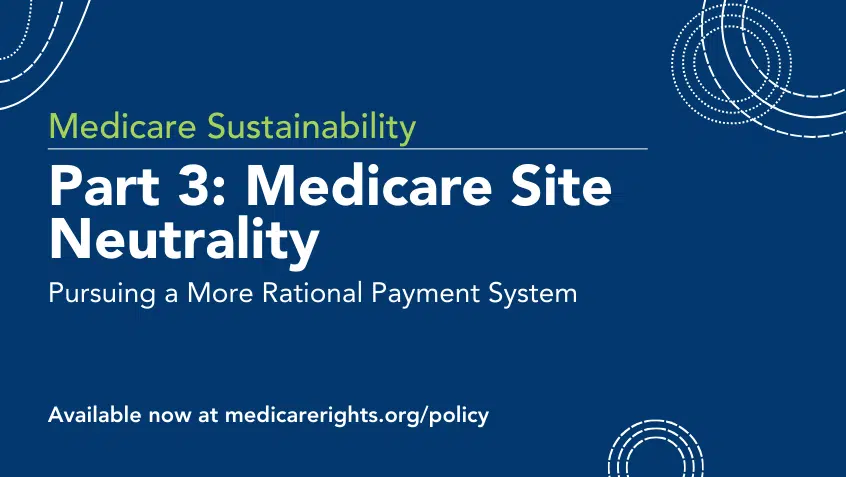
Proposed Rules are a Mixed Bag but Take Important Steps to Bolster Primary Care
Over the past week, Medicare Rights has submitted comments in response to two proposed rules from the Centers for Medicare
Join Us Live for a Discussion on Medicare, Democracy, and the Future of Health Care
Medicare provides health coverage to over 67 million older adults and people with disabilities, paying for important medical care in hospital and outpatient settings. Nearly 12.5 million beneficiaries also rely on Medicaid, which helps with affordability through the Medicare Savings Programs (MSPs), and covers services Medicare does not, such as long-term services and supports. The Medicare Rights Center supports strengthening Medicare and Medicaid, modernizing benefits and financial assistance, and bolstering the workers and caregivers who deliver this vital care.

Over the past week, Medicare Rights has submitted comments in response to two proposed rules from the Centers for Medicare

This week, the House Ways and Means and Energy and Commerce Committees met to review bills that aim to reduce
Our comments are informed by our work helping callers to our National Helpline navigate and afford their care. These experiences drive us to support efforts within this rule to bring more sustainability and rationality to Medicare payment, including by establishing greater site neutrality.
Our comments are informed by our work helping beneficiaries, including callers to our National Helpline, navigate, understand, access, and afford their care. Based on this experience, we know many people with Medicare want and need to maintain deep and trusting relationships with their providers. Finding the right provider fit, spending time with that provider, and staying with that provider over the years is a priority for many people across Original Medicare and Medicare Advantage.

On July 4, President Trump signed the damaging Republican budget reconciliation bill into law. But that does not mean each

Medicare Advantage (MA) overpayment allows plans to funnel more money into supplemental benefits, appealing to enrollees who want or need



This part of the series explores the origins and structure of Medicare financing. Through an issue brief, infographic, and video, it outlines the various sources of funding for the three major parts of Medicare and lays out how projections and costs have fluctuated over the program’s history.

Under current site-specific payment rates, the same service can cost patients and Medicare vastly different amounts based on the location and hospital affiliation of the provider. This part of the series explains how these payment rules incentivize hospitals to vertically integrate routine care in order to drive up profits. Site-neutral payments offer a more rational alternative that would minimize arbitrary differences in cost and protect Medicare sustainability.

Over the past week, Medicare Rights has submitted comments in response to two proposed rules from the Centers for Medicare

This week, the House Ways and Means and Energy and Commerce Committees met to review bills that aim to reduce
Our comments are informed by our work helping callers to our National Helpline navigate and afford their care. These experiences drive us to support efforts within this rule to bring more sustainability and rationality to Medicare payment, including by establishing greater site neutrality.
Our comments are informed by our work helping beneficiaries, including callers to our National Helpline, navigate, understand, access, and afford their care. Based on this experience, we know many people with Medicare want and need to maintain deep and trusting relationships with their providers. Finding the right provider fit, spending time with that provider, and staying with that provider over the years is a priority for many people across Original Medicare and Medicare Advantage.

On July 4, President Trump signed the damaging Republican budget reconciliation bill into law. But that does not mean each

Medicare Advantage (MA) overpayment allows plans to funnel more money into supplemental benefits, appealing to enrollees who want or need



This part of the series explores the origins and structure of Medicare financing. Through an issue brief, infographic, and video, it outlines the various sources of funding for the three major parts of Medicare and lays out how projections and costs have fluctuated over the program’s history.

Under current site-specific payment rates, the same service can cost patients and Medicare vastly different amounts based on the location and hospital affiliation of the provider. This part of the series explains how these payment rules incentivize hospitals to vertically integrate routine care in order to drive up profits. Site-neutral payments offer a more rational alternative that would minimize arbitrary differences in cost and protect Medicare sustainability.